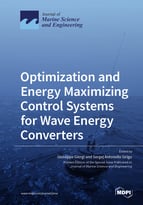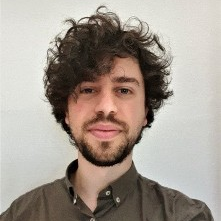Optimization and Energy Maximizing Control Systems for Wave Energy Converters
A special issue of Journal of Marine Science and Engineering (ISSN 2077-1312). This special issue belongs to the section "Ocean Engineering".
Deadline for manuscript submissions: closed (14 November 2021) | Viewed by 34775
Special Issue Editors
Interests: marine energy; nonlinear hydrodynamics; wave–body interaction; energy-maximizing control systems; mooring systems; computational fluid dynamics; nonlinear dynamics; numerical modelling; optimization algorithms; numerical computing
Special Issues, Collections and Topics in MDPI journals
Interests: marine energy; energy maximizing control systems; mooring systems; array optimization; resource assessment; stochastic analysis; numerical modelling; optimization algorithms; experimental tank testing; mechatronic systems
Special Issue Information
Dear Colleagues,
In recent years we are witnessing a great interest and activity in the field of wave energy converters (WECs) development, striving for competitiveness and economic viability via increasing power conversion while decreasing costs and ensuring survivability. In the community the consensus is that both optimization and control are sine qua non conditions for success, but many challenges, peculiar to WECs, need to be addressed. Unlike other traditional control applications, the control objective for WECs is to exaggerate the motion, potentially inducing strong nonlinearities in the system and stressing the power-conversion chain and mechanical structure. Therefore, it is crucial to include techno-economical constraints in both the optimization and control objective functions. Furthermore, although often considered as consecutive independent phases, optimization and control are mutually dependent and, ideally, should be considered together.
We would like to invite papers on the topic of “Optimization and Energy Maximizing Control Systems for Wave Energy Converters”. This includes, but is not limited to, holistic optimization algorithm, specific challenges of the WEC application case (large motions, estimation, forecasting, power take-off), theoretical and numerical development and implementation of novel control strategies for WECs, evaluation of their performance through high-fidelity numerical models or experiment, importance and representation of nonlinearities in the controlled device.
Dr. Giuseppe Giorgi
Dr. Sergej Antonello Sirigu
Guest Editors
Manuscript Submission Information
Manuscripts should be submitted online at www.mdpi.com by registering and logging in to this website. Once you are registered, click here to go to the submission form. Manuscripts can be submitted until the deadline. All submissions that pass pre-check are peer-reviewed. Accepted papers will be published continuously in the journal (as soon as accepted) and will be listed together on the special issue website. Research articles, review articles as well as short communications are invited. For planned papers, a title and short abstract (about 100 words) can be sent to the Editorial Office for announcement on this website.
Submitted manuscripts should not have been published previously, nor be under consideration for publication elsewhere (except conference proceedings papers). All manuscripts are thoroughly refereed through a single-blind peer-review process. A guide for authors and other relevant information for submission of manuscripts is available on the Instructions for Authors page. Journal of Marine Science and Engineering is an international peer-reviewed open access monthly journal published by MDPI.
Please visit the Instructions for Authors page before submitting a manuscript. The Article Processing Charge (APC) for publication in this open access journal is 2600 CHF (Swiss Francs). Submitted papers should be well formatted and use good English. Authors may use MDPI's English editing service prior to publication or during author revisions.
Keywords
- Wave energy
- Optimization
- Energy maximizing control
- Nonlinear hydrodynamics
- Power take-off
- Estimation
- Forecasting







